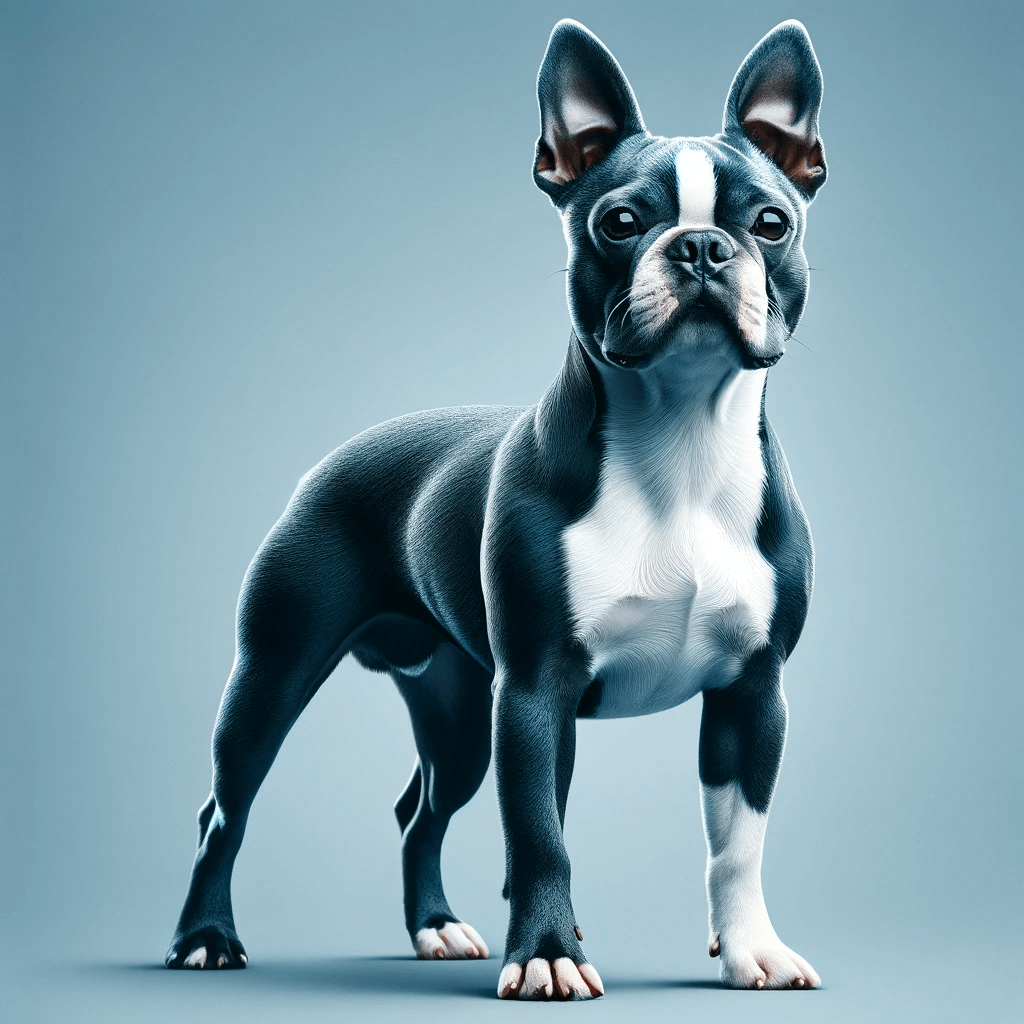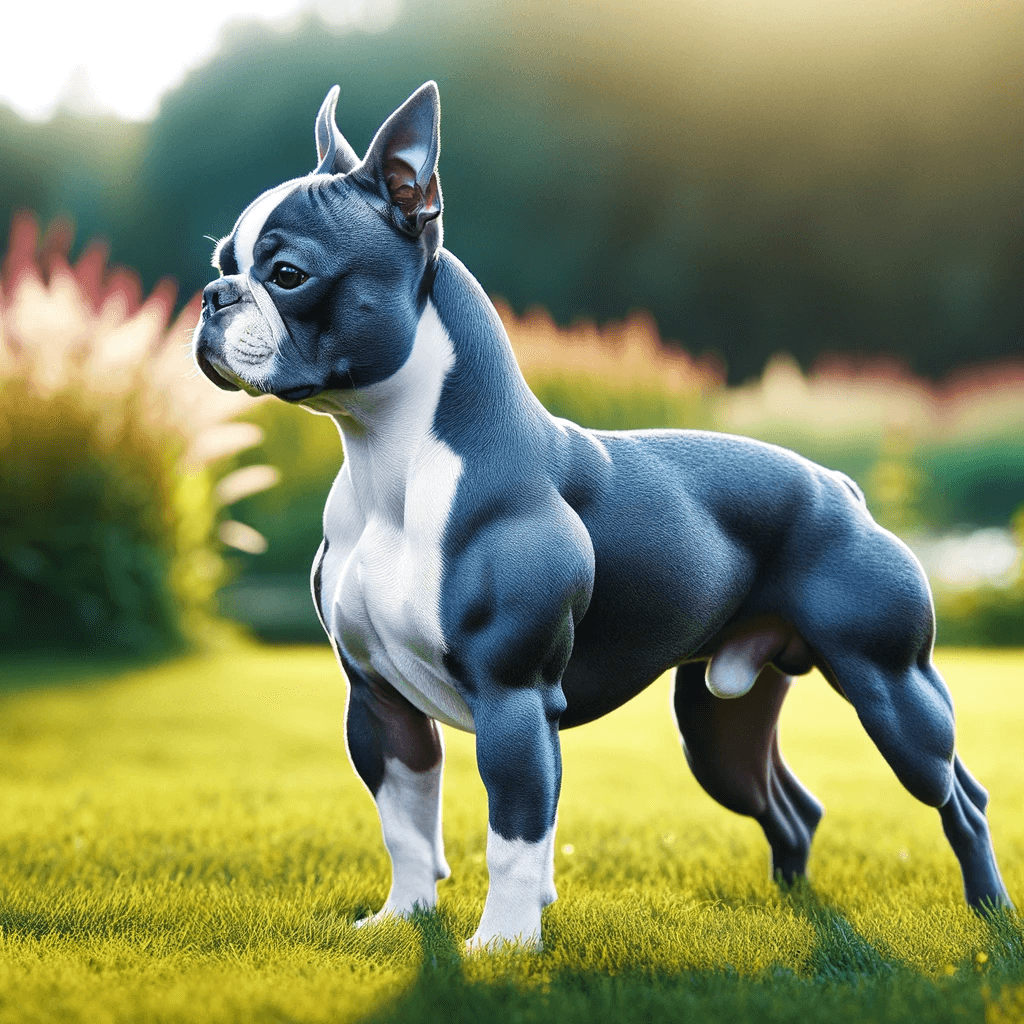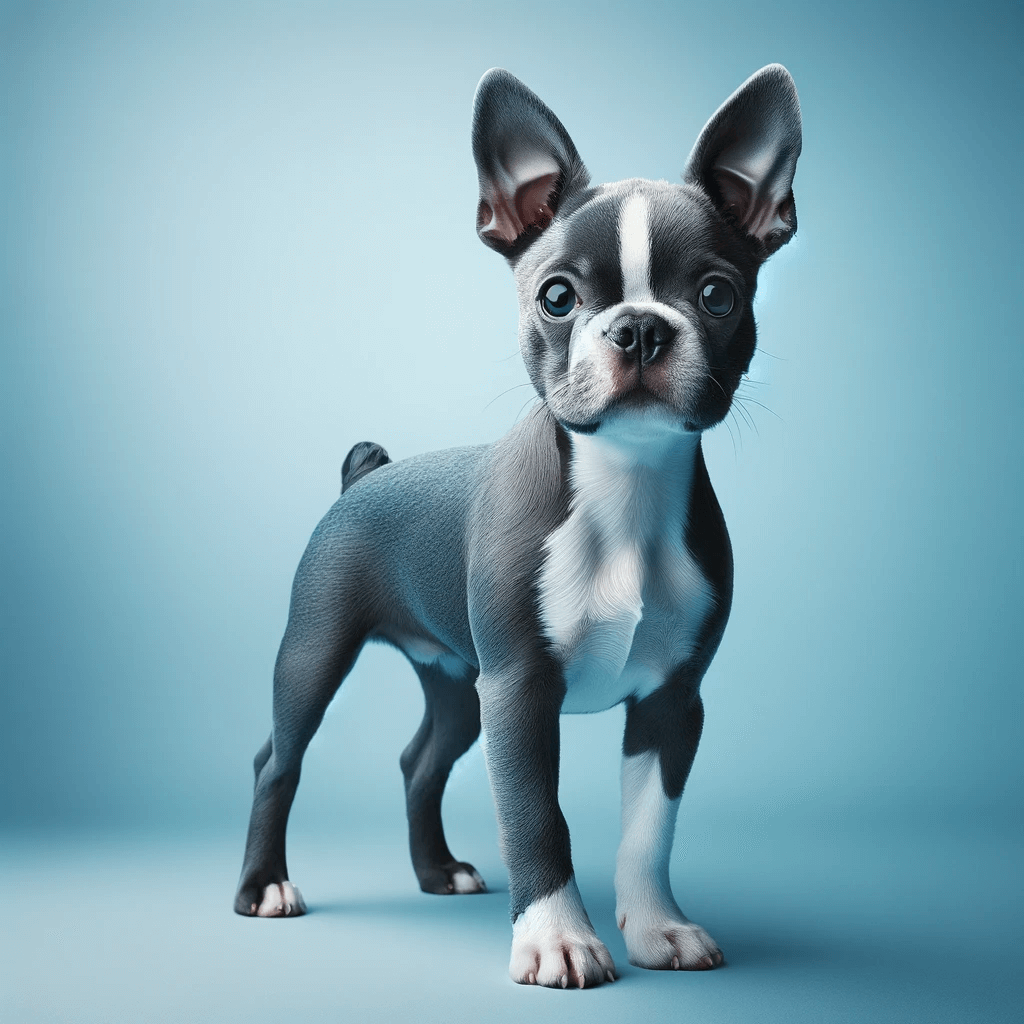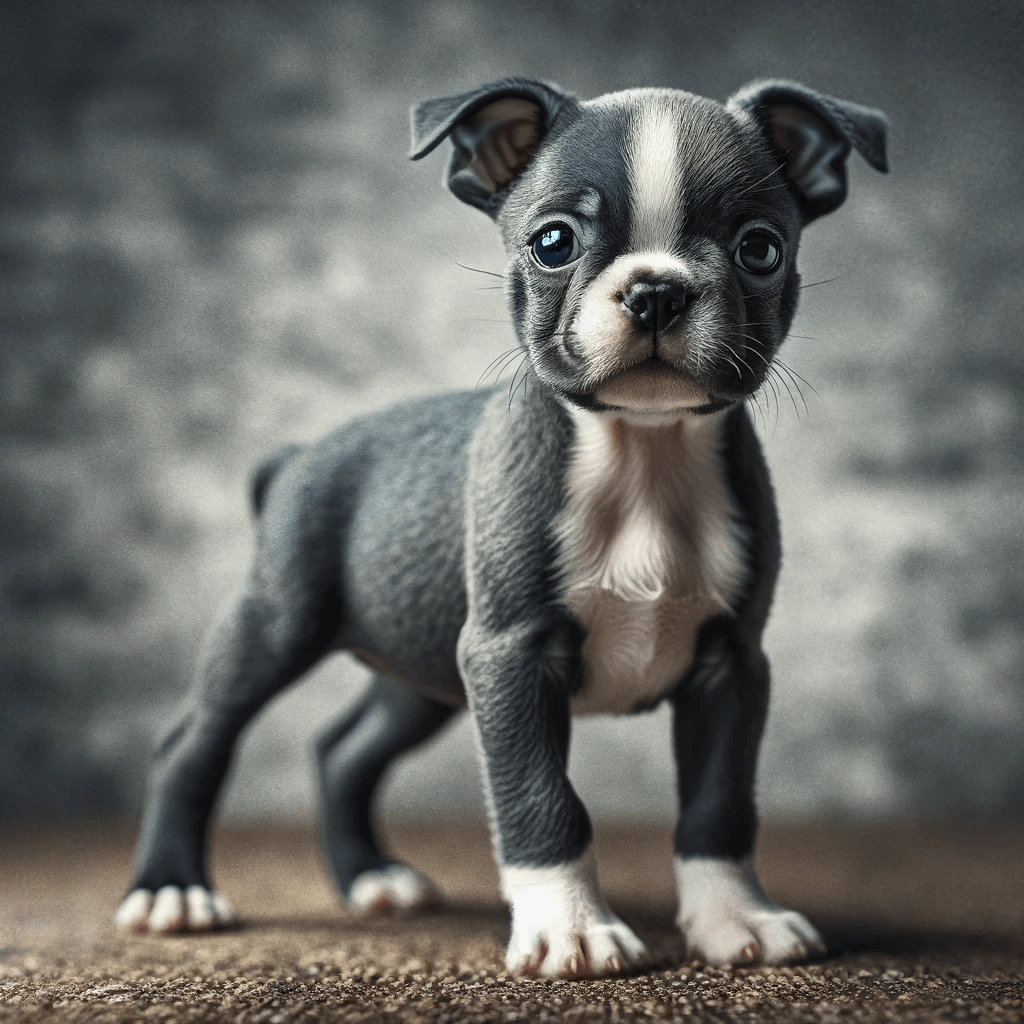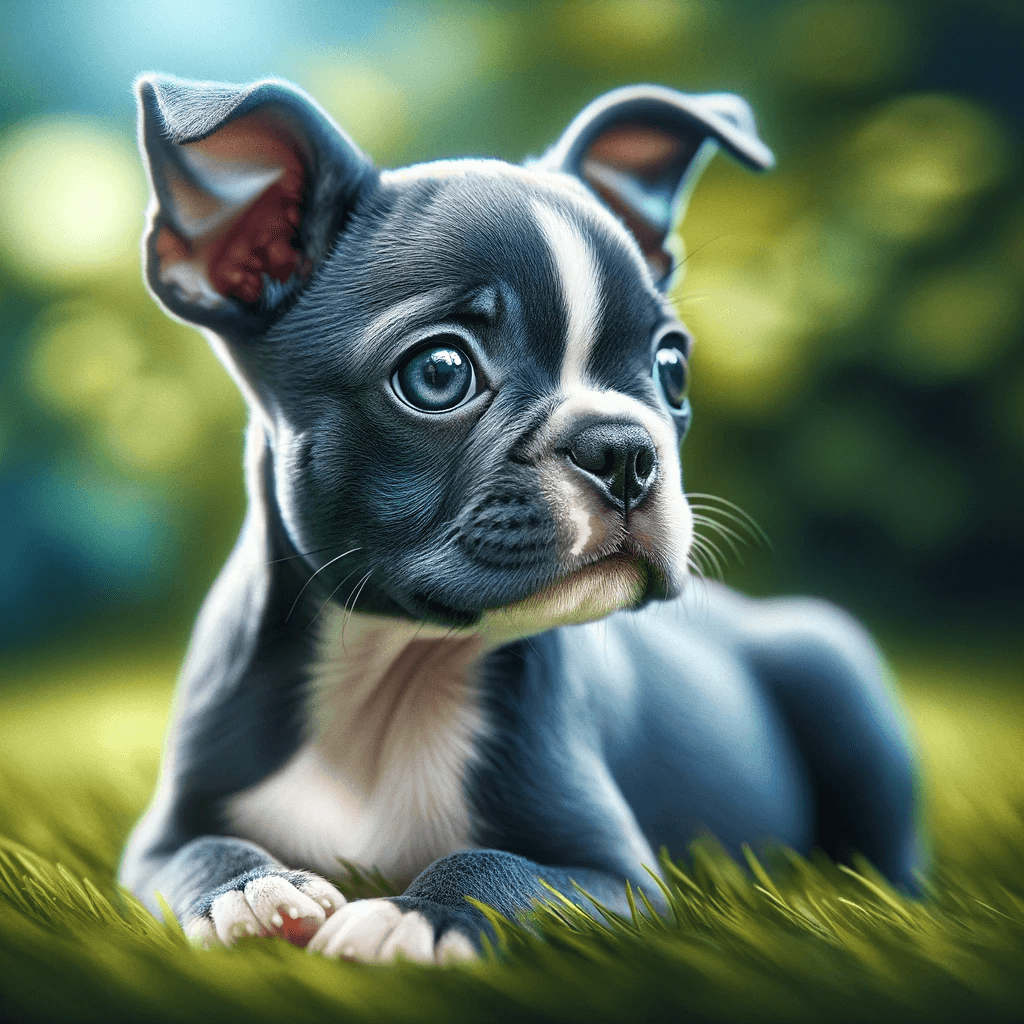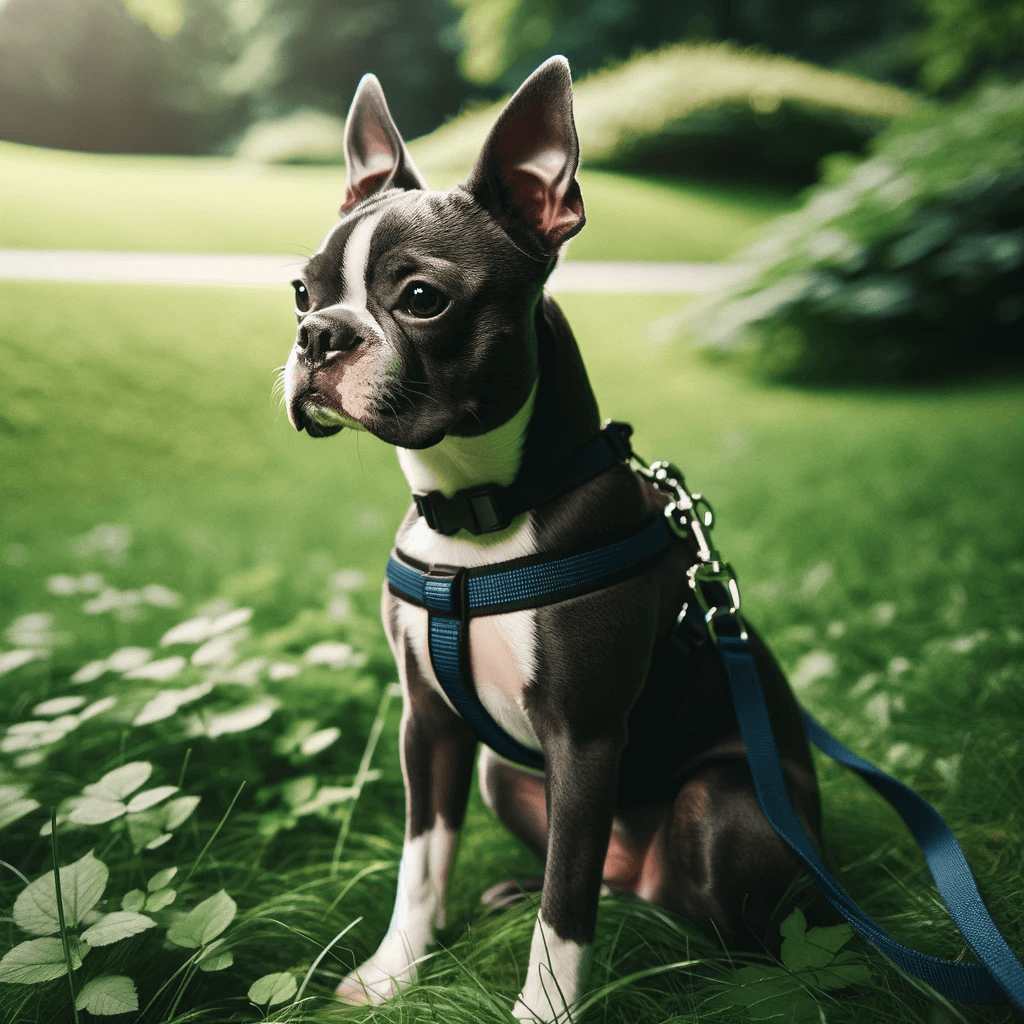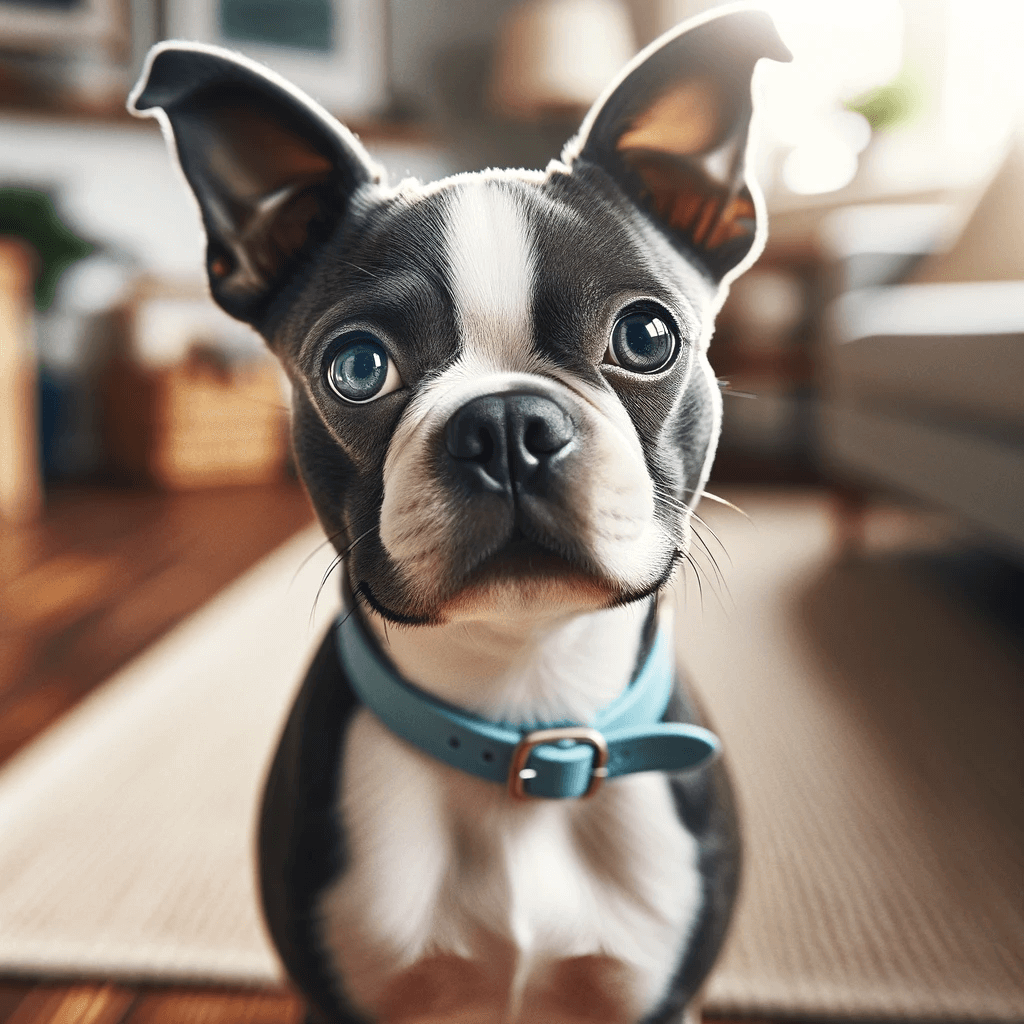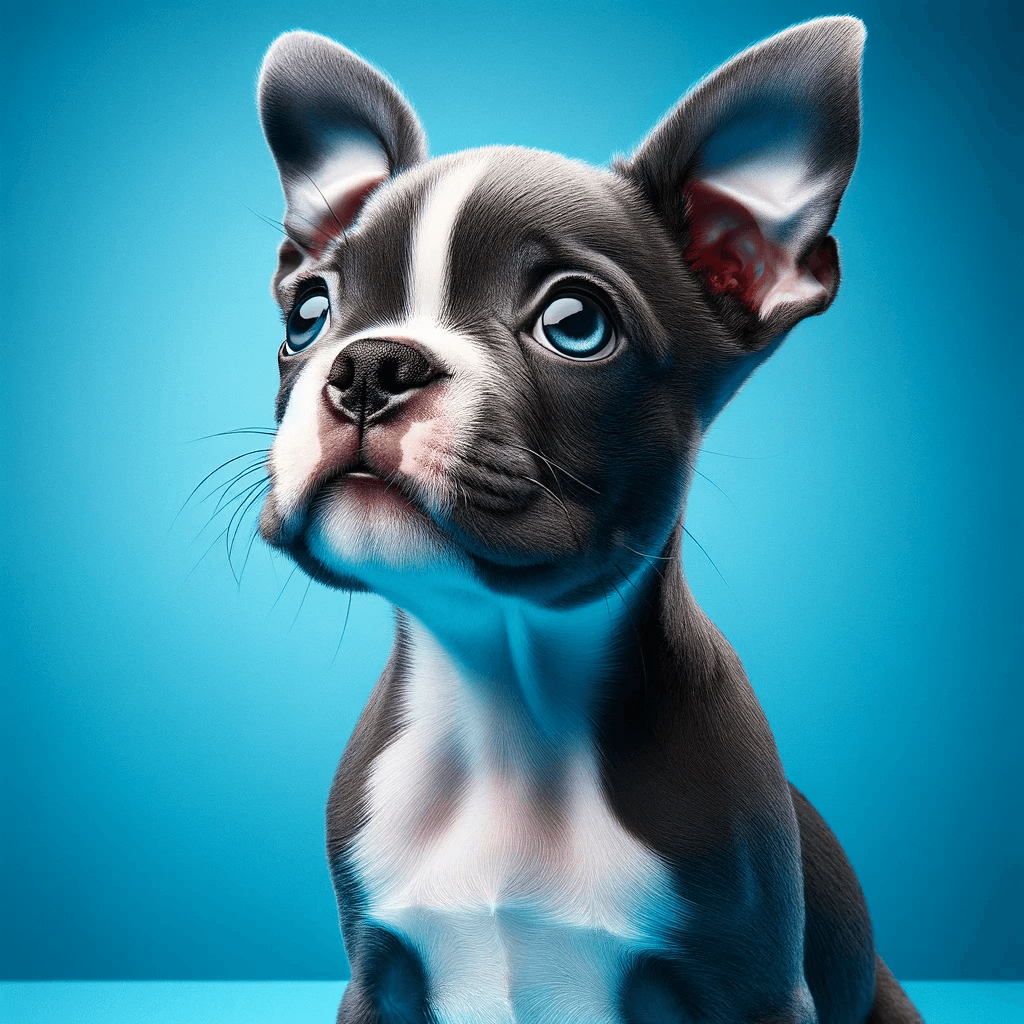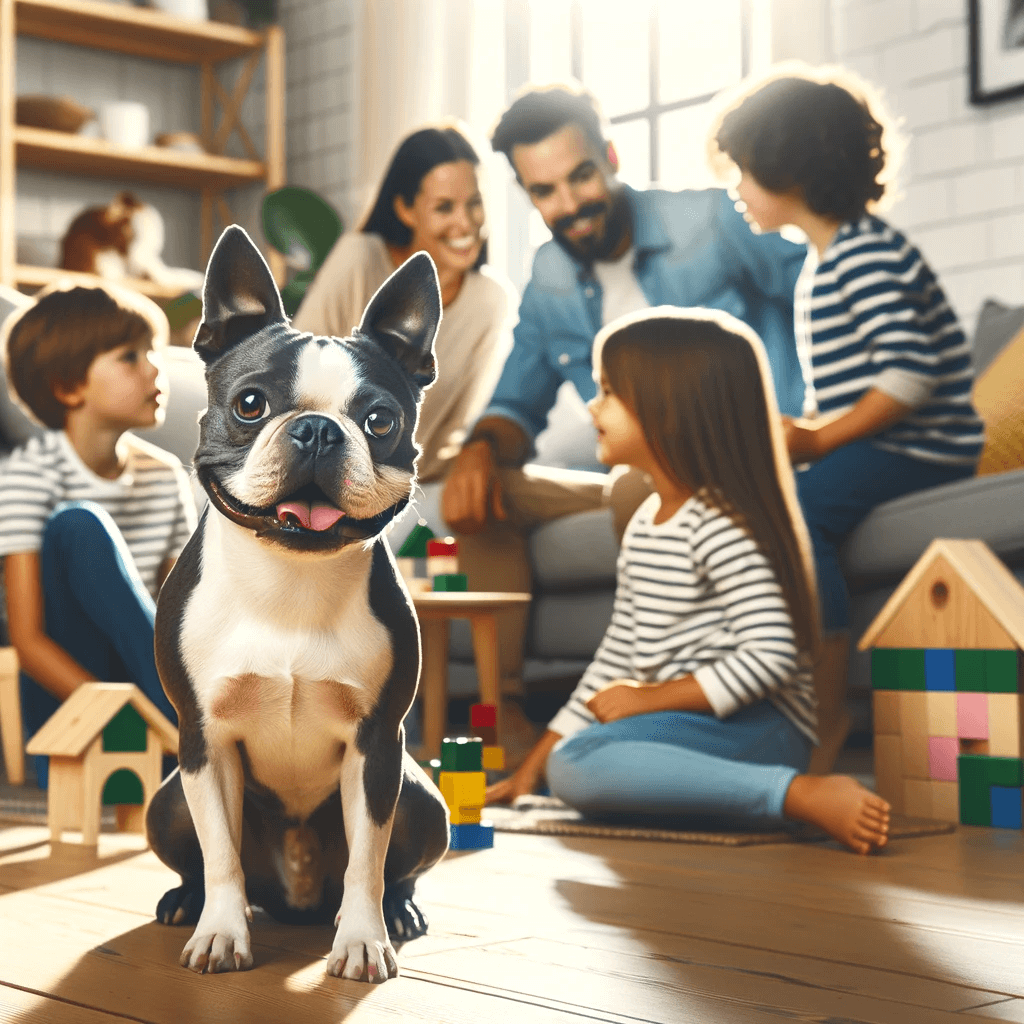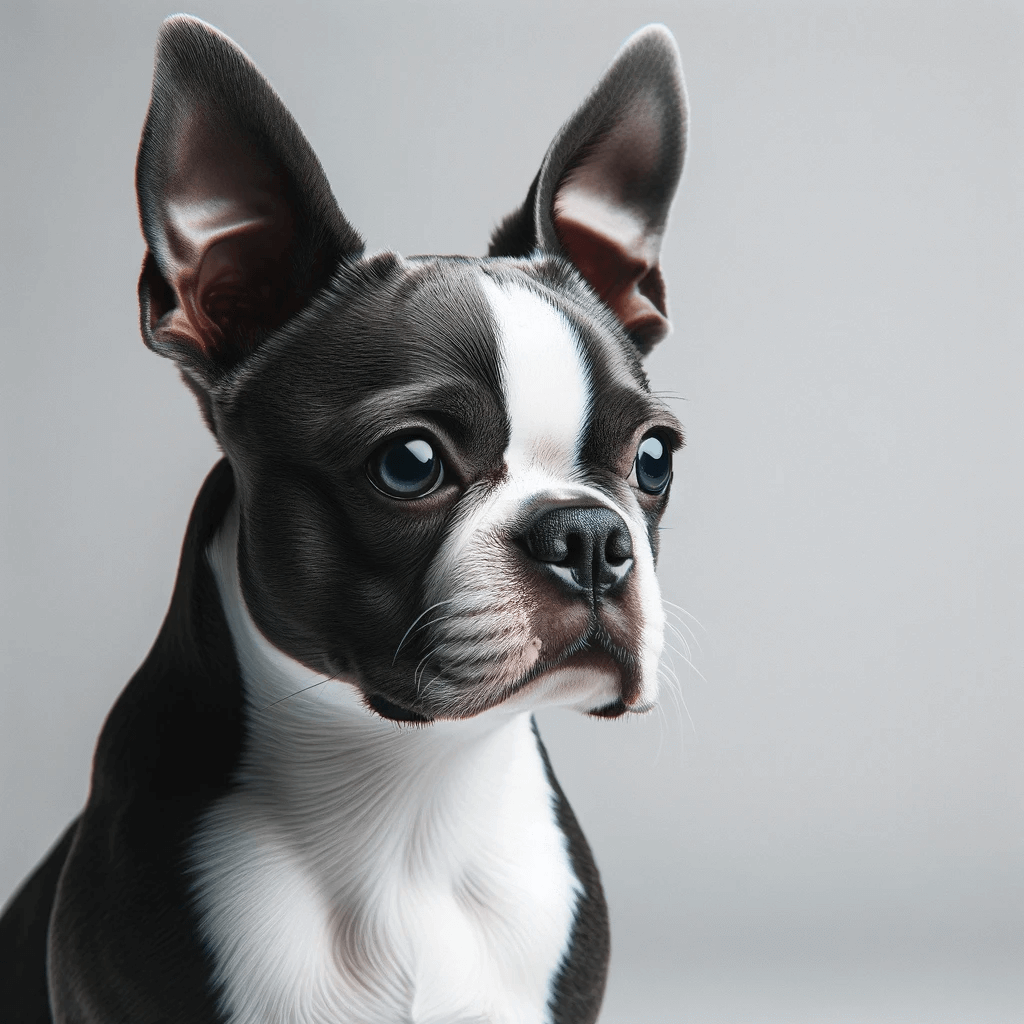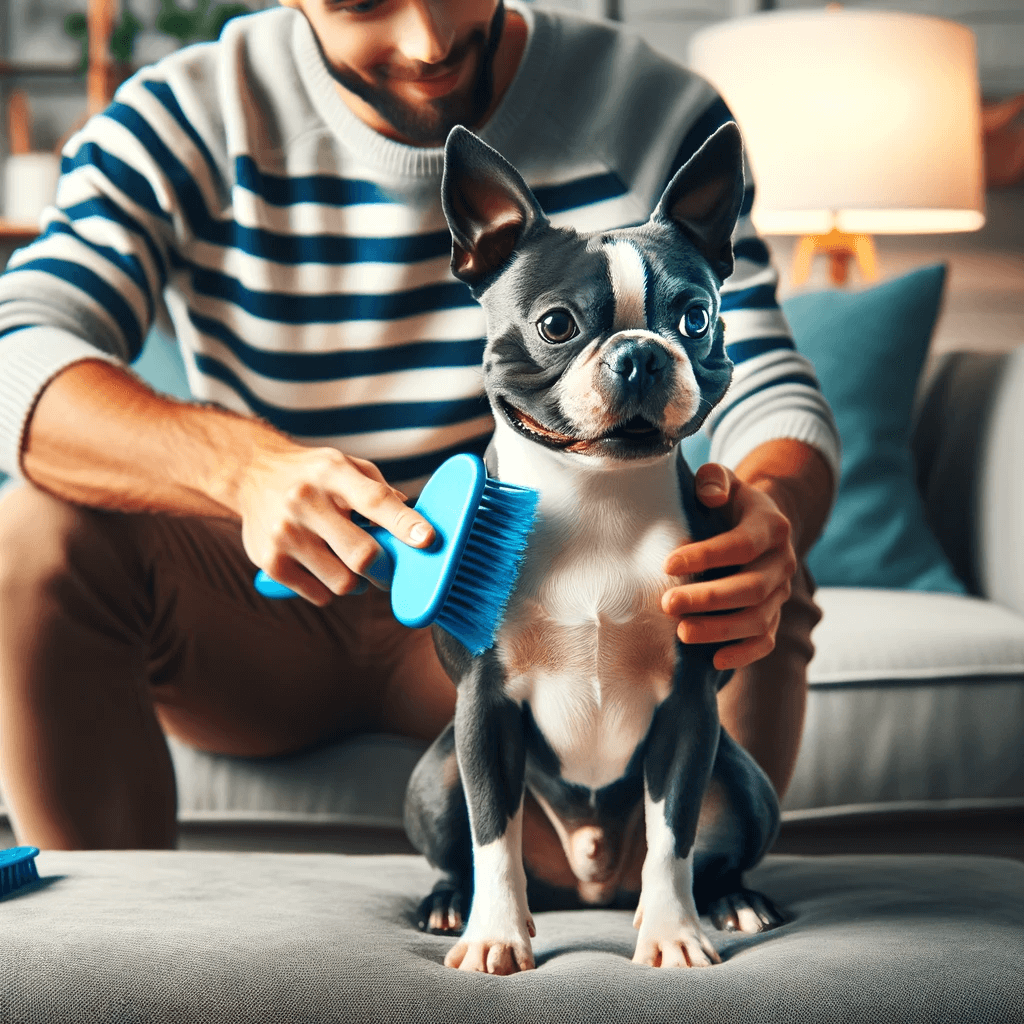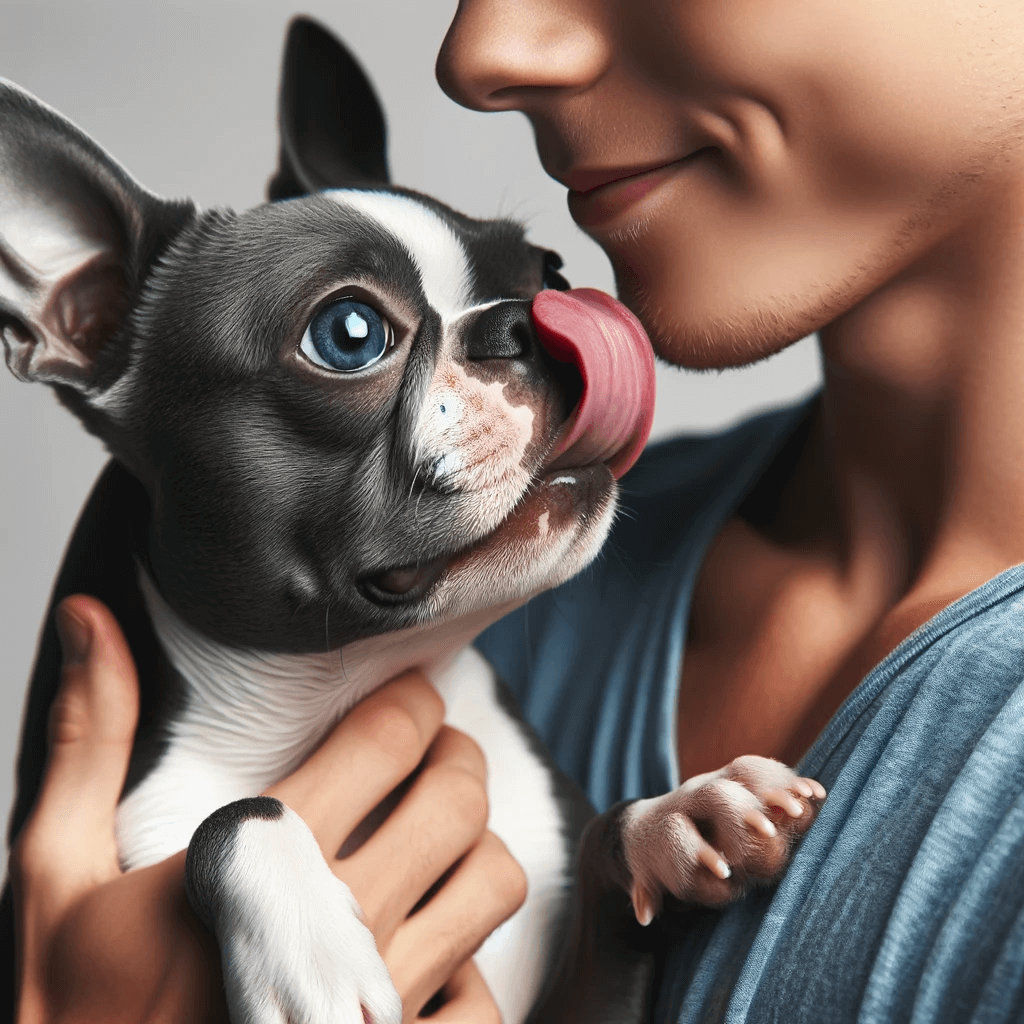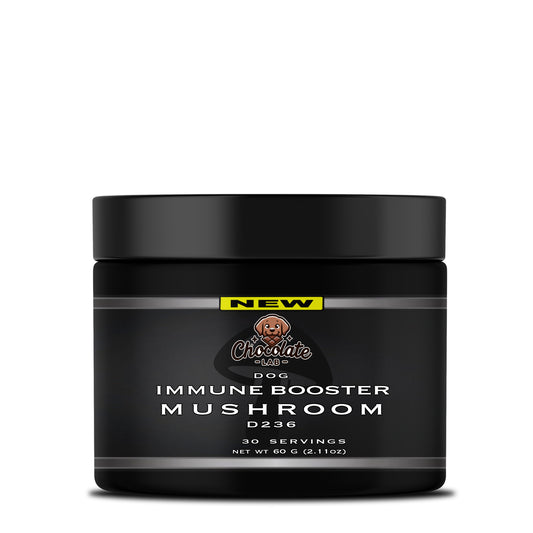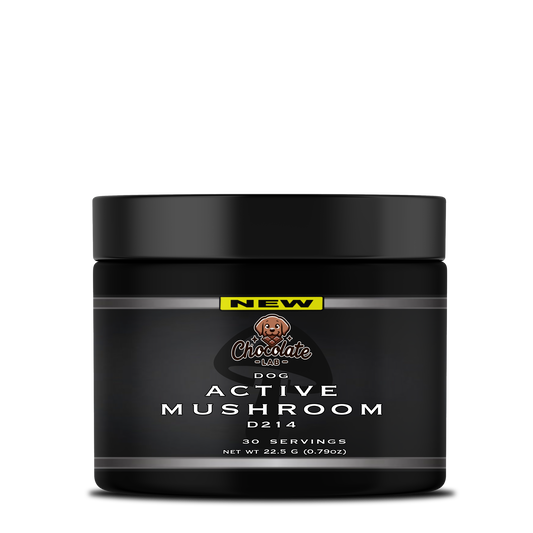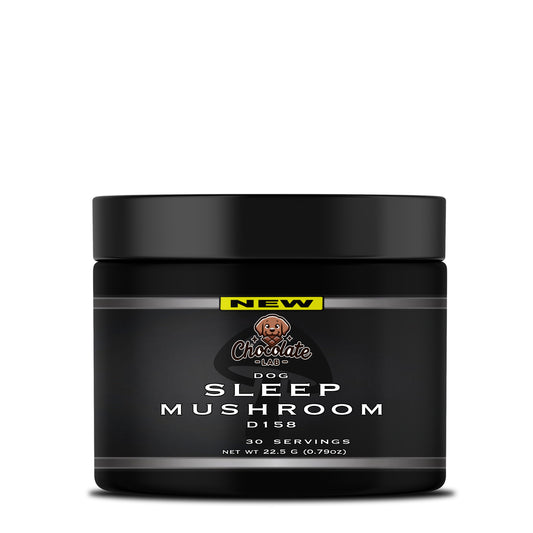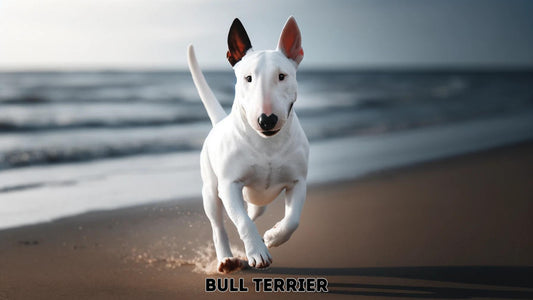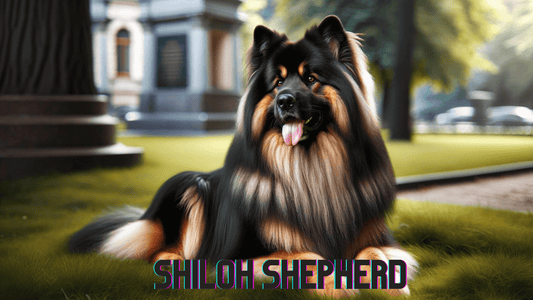The Blue Boston Terrier: A Comprehensive Guide for 2024! Whether you're an existing enthusiast or contemplating the joy of having one of these exceptional dogs in your life, this guide is your ultimate resource. We'll delve into every facet of living with a Blue Boston Terrier, exploring their unique characteristics, care requirements, and the sheer delight they bring to their owners.
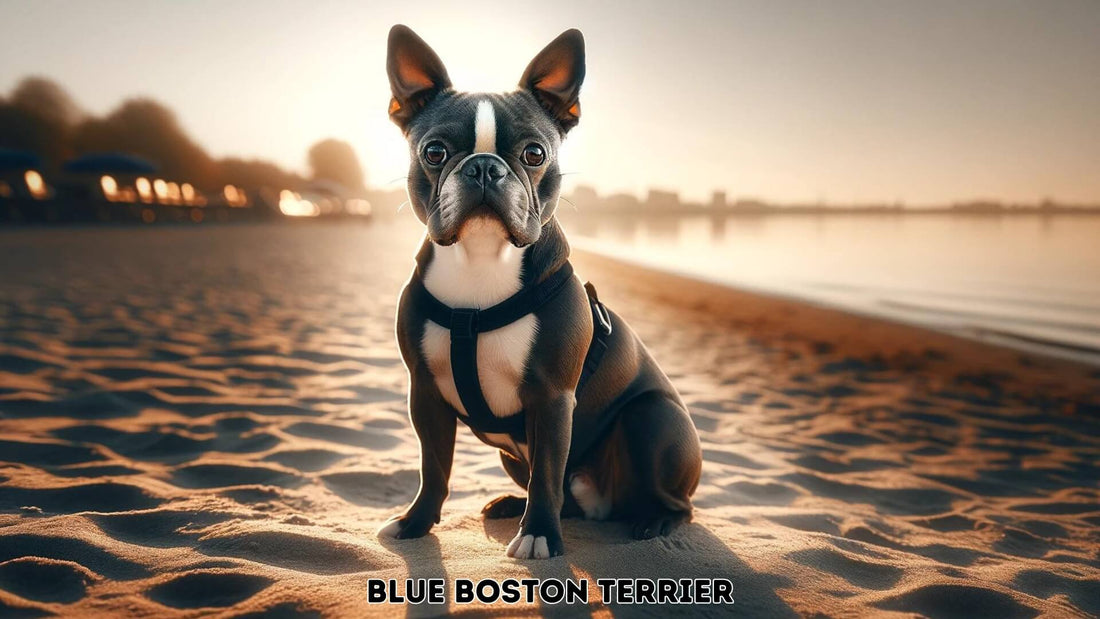
Blue Boston Terrier - Dog Breed Information, Puppies & More
Unlock the Secrets of Blue Boston Terriers: Breed Info, Puppies & Surprising Facts Revealed!
Published on 02/06/2024, 5:00 PM MST
Last Updated on 02/06/2024, 5:00 PM MST
Essential Facts About Blue Boston Terriers

| Key Term | Valuable Facts |
|---|---|
| What is a Blue Boston Terrier? | A Blue Boston Terrier is a color variant of the Boston Terrier breed, characterized by a blue (gray) coat color. This unique shade is due to a dilution of the black coat gene. It's important to note that this color is not recognized as standard by most breed clubs. |
| Coat Characteristics | These dogs have a short, smooth coat with a blue-gray hue. They may have the same white markings as standard Boston Terriers on their face, chest, and paws. |
| Breed Traits | Blue Boston Terriers share the standard breed's compact size, expressive face, and friendly demeanor. They are known for their intelligence and lively personality. |
| Temperament | They are affectionate, playful, and sociable, making them great companions for families and individuals alike. Early socialization is key to developing a well-rounded personality. |
| Exercise Needs | Moderate exercise is sufficient for Blue Boston Terriers. Daily walks, playtime, and mental stimulation are important to keep them healthy and happy. |
| Grooming Requirements | Their coat is low maintenance but does require regular brushing to control shedding and maintain its shine. Regular ear cleaning and nail trimming are also necessary. |
| Health Considerations | Similar to standard Boston Terriers, they can be prone to breathing difficulties due to their brachycephalic (short-nosed) face. Skin issues may also be more common in blue-coated dogs. Regular veterinary check-ups are recommended. |
| Adaptability | They adapt well to various living situations, including apartments. Their size and exercise needs make them suitable for both city and rural living. |
| Training | These dogs are intelligent and respond well to positive reinforcement training methods. Consistency and patience are key in training Boston Terriers. |
| Lifespan and Size | Blue Boston Terriers typically have a lifespan of about 11 to 13 years. They are a small breed, making them a good choice for people with limited space. |
Table of Content
- Introduction: Discovering the Blue Boston Terrier
- Origins and Development of the Blue Boston Terrier
- Physical Characteristics of Blue Boston Terriers
- Temperament and Personality of Blue Boston Terriers
- Training and Exercise Needs of Blue Boston Terriers
- Health and Lifespan of Blue Boston Terriers
- Grooming and Care of Blue Boston Terriers
- Blue Boston Terriers in Family and Social Settings
- Differences Between Male and Female Blue Boston Terriers
- Selecting a Blue Boston Terrier Puppy
- Unique Characteristics of Blue Boston Terriers
- Pros and Cons of Owning a Blue Boston Terrier
- Cost Analysis for Owning a Blue Boston Terrier
- Conclusion: The Unique Appeal of Blue Boston Terriers
- FAQs: Top Questions About Blue Boston Terriers Answered
Introduction: Discovering the Blue Boston Terrier

The Blue Boston Terrier represents a unique and enchanting twist on the classic Boston Terrier breed. Distinguished by its striking blue coat, this variant blends the endearing traits of the traditional Boston Terrier with a rare coloration that captivates dog lovers and breed enthusiasts alike. Originating from the standard Boston Terrier, which is known for its friendly demeanor and compact size, the Blue Boston Terrier adds a layer of allure with its distinctive coloring. The blue hue, ranging from a deep steel to a lighter sky blue, sets these dogs apart in appearance while retaining the breed's beloved personality and temperament. This rare color variant has been gaining popularity, drawing attention for its unusual yet stunning coat. For potential owners, the Blue Boston Terrier presents an opportunity to enjoy the classic qualities of the Boston Terrier in a visually unique package. Understanding the specific needs of this color variant, particularly in terms of coat care, is essential for ensuring their well-being and maintaining their vibrant appearance.
- Introduction to the Variant: The Blue Boston Terrier is a rare and visually striking color variation of the Boston Terrier breed.
- Unique Features: Known for its distinctive blue coat, expressive eyes, and compact, muscular build.
- Increasing Popularity: Gaining attention among dog enthusiasts for its unique appearance and charming personality.
- Similar to the unique hue of the Blue Boston Terrier, the Red Boston Terrier article delves into another captivating color variation within the breed, showcasing the diversity and beauty of these beloved dogs.
Physical Comparison with Standard Boston Terriers
| Feature | Blue Boston Terrier | Standard Boston Terrier |
|---|---|---|
| Coat Color | Unique blue shade, from deep steel to light sky blue | Typically black, brindle, or seal |
| Size | Compact, muscular build | Similar in size and build |
| Eye Expression | Expressive, round eyes | Alert and kind eyes |
Quick Tips for Potential Owners
🐾 Coat Care: Pay extra attention to coat care to maintain the health and appearance of the blue coat.
🐾 Health Considerations: Be aware of any specific health concerns associated with the blue coat variation.
🐾 Socialization and Training: Focus on early socialization and consistent training to harness their energetic and affectionate nature.
Origins and Development of the Blue Boston Terrier

The Blue Boston Terrier has a fascinating history that ties back to the original Boston Terrier breed. Known as the "American Gentleman," the Boston Terrier was developed in the late 19th century in Boston, Massachusetts. Initially bred for pit-fighting, the breed quickly evolved into a companion dog, prized for its friendly nature and dapper appearance. The blue coat color in Boston Terriers is a result of a specific genetic mutation, which affects the usual black or brindle coat coloring. While not recognized by all kennel clubs, the blue variant has grown in popularity among Boston Terrier enthusiasts and pet owners who are drawn to its unique aesthetic. Understanding the genetic background and history of the Blue Boston Terrier can help owners appreciate this special variant. It's important to note that the blue coat color does not affect the dog's health or temperament, making them just as suitable as pets as their standard-colored counterparts.
- Breed History: Boston Terriers have evolved from pit-fighting dogs to beloved companions.
- Genetic Mutation: The blue coat color is a result of a genetic variation.
- Growing Recognition: Despite some controversy, the blue variant has gained popularity.
- The striking appearance of the Blue Doberman is explored in depth, highlighting the genetic factors and care considerations for this rare coloration, much like the blue coat found in Boston Terriers.
Historical Development Timeline
| Event | Description |
|---|---|
| Late 19th Century Origins | Boston Terriers originated in Boston, Massachusetts, as a cross between bulldogs and terriers. |
| Early 20th Century | The breed evolved from a fighting dog to a companion animal, known for its amiable personality. |
| Mid-20th Century Onwards | The breed gained popularity across the United States for its friendly nature and distinctive appearance. |
| Emergence of Blue Coat | The blue coat color, a result of a genetic mutation, began appearing in some Boston Terriers. |
| Present Day | The Blue Boston Terrier has become a sought-after variant, admired for its unique coloring. |
Quick Tips for Understanding Breed History
🐾 Research the Breed's Origins: Gain insight into the Boston Terrier's history to better understand the blue variant.
🐾 Genetic Awareness: Be aware of the genetics behind the blue coat, which does not impact the dog's health or temperament.
🐾 Breed Acceptance: Recognize that while not universally accepted by all kennel clubs, the blue variant is increasingly popular among enthusiasts.
Physical Characteristics of Blue Boston Terriers

The physical characteristics of the Blue Boston Terrier are as captivating as their unique coat color. These dogs typically exhibit the standard Boston Terrier build: compact, muscular, and well-balanced. Their striking blue coat ranges from a deep, dark blue to a lighter, silvery shade, often accompanied by the breed's signature white markings. This coat is short, smooth, and requires regular grooming to maintain its luster. Blue Boston Terriers have a square-shaped head with a short muzzle, large, round eyes that are full of expression, and erect ears. Their tail is typically short and can be either straight or curled. Despite the distinctive coat color, the Blue Boston Terrier shares the same physical standards as other Boston Terriers in terms of size, weight, and overall body structure. Their charming and compact size makes them suitable for a variety of living situations, from apartments to houses with yards.
- Coat Description: Unique blue coloring with possible white markings.
- Body Structure: Compact and muscular build, typical of the Boston Terrier breed.
- Facial Features: Square-shaped head with expressive eyes and erect ears.
- Tail: Short, straight or curled, in line with breed standards.
- Our piece on the Blue German Shepherd examines another rare coat color within a well-known breed, offering insights into the characteristics that make these blue-coated dogs as special as their Boston Terrier counterparts.
Physical Traits Comparison
| Feature | Blue Boston Terrier | Standard Boston Terrier |
|---|---|---|
| Coat | Unique blue coloring | Black, brindle, or seal, with white markings |
| Size and Weight | Compact, 15-25 pounds typically | Similar size and weight range |
| Head and Muzzle | Square-shaped head, short muzzle | Same breed-standard facial structure |
Quick Tips for Physical Care
🐾 Regular Grooming: Maintain their coat's health and appearance with regular grooming.
🐾 Monitor Weight: Ensure a balanced diet and regular exercise to maintain their ideal weight.
🐾 Eye and Ear Care: Pay attention to their expressive eyes and erect ears for signs of health issues.
Temperament and Personality of Blue Boston Terriers

The temperament and personality of Blue Boston Terriers are much like their traditionally colored counterparts – full of life, affectionate, and sociable. These dogs are known for their playful and energetic nature, often displaying a sense of humor that endears them to everyone they meet. Despite their small size, they have a big personality, characterized by a friendly and outgoing demeanor. Blue Boston Terriers are intelligent and highly trainable, responding well to positive reinforcement techniques. They form strong bonds with their families and are known for being exceptionally good with children, making them excellent family pets. However, like all dogs, early socialization and training are crucial to ensure they grow into well-rounded adults. Their adaptability makes them well-suited for various living situations, from bustling city apartments to spacious suburban homes. Owners of Blue Boston Terriers often speak of their loyalty and affectionate nature, which makes them not just pets, but beloved members of the family.
- Playful and Sociable: Known for their lively and affectionate personality.
- Intelligence and Trainability: Highly trainable with a keen intelligence.
- Family Bonding: Strong family bonds, great with children.
- Adaptability: Suited for various living environments.
- The Lilac French Bulldog article provides a closer look at this unique coloration in French Bulldogs, drawing parallels to the rarity and appeal of the Blue Boston Terrier's coat.
Temperament Comparison Chart
| Trait | Blue Boston Terrier | General Small Breed Traits |
|---|---|---|
| Sociability | Highly sociable and friendly | Similar levels of sociability |
| Trainability | Intelligent and responsive | Generally trainable with positive methods |
| Family-Friendly | Excellent with families and children | Varies by breed, but often family-oriented |
Quick Tips for Temperament Management
🐾 Consistent Training: Establish a routine of positive reinforcement training.
🐾 Socialization: Expose them to various people, pets, and environments early on.
🐾 Playtime and Interaction: Engage in regular play and bonding activities to strengthen your relationship.
Training and Exercise Needs of Blue Boston Terriers

Training and exercise are crucial for the well-being of Blue Boston Terriers. Due to their intelligence and energy, they require regular mental and physical stimulation. Training should begin early, focusing on basic obedience, social skills, and any specific behavioral concerns. These dogs excel in agility and obedience training, enjoying the challenges and interaction. Daily exercise, such as walks, play sessions, and interactive games, is vital to keep them physically fit and mentally sharp. Lack of adequate exercise can lead to behavioral issues such as destructiveness or excessive barking. Training sessions are an opportunity to bond with your Blue Boston Terrier and reinforce positive behaviors. Their adaptability and eagerness to please make them excellent candidates for various dog sports and activities, providing fun ways to keep them engaged and active.
- Essential Training: Early and consistent training focusing on obedience and socialization.
- Daily Exercise Needs: Requires regular physical activity to maintain health and happiness.
- Mental Stimulation: Enjoys challenges, making them great at agility and obedience exercises.
- Preventing Behavioral Issues: Adequate exercise and mental stimulation are key to preventing unwanted behaviors.
- Delving into the world of unique dog breeds, the Exotic Bully article explores the characteristics and breeding practices that define this distinctive breed, similar to the specific lineage of Blue Boston Terriers.
Exercise and Training Regimen
| Day | Activity |
|---|---|
| Monday | Morning walk, basic obedience exercises |
| Tuesday | Interactive playtime, agility training |
| Wednesday | Socialization activities, puzzle toys |
| Thursday | Evening jog, training review sessions |
| Friday | Fetch games, new trick learning |
| Weekend | Dog park visits, relaxation and family time |
Quick Tips for Effective Training
🐾 Engage in Regular Exercise: Plan daily walks and play sessions for physical health.
🐾 Interactive Training: Use games and agility exercises to mentally stimulate and train your Blue Boston Terrier.
🐾 Positive Reinforcement: Reward good behavior with treats, praise, and affection to encourage learning.
🐾 Consistency is Key: Maintain a consistent training schedule to reinforce learned behaviors and skills.
Health and Lifespan of Blue Boston Terriers

The health and lifespan of Blue Boston Terriers are generally similar to standard Boston Terriers, with a typical lifespan of 11 to 15 years. However, the blue coat color can sometimes be associated with specific health concerns, such as skin sensitivities and allergies. Regular health check-ups and monitoring for signs of common issues like respiratory problems, eye conditions, and joint issues are important. A balanced diet, regular exercise, and preventive healthcare can significantly contribute to their overall well-being. Owners should be aware of the breed's susceptibility to heat exhaustion due to their short snouts, making proper care during hot weather crucial. Vaccinations, routine deworming, and flea and tick prevention are also vital aspects of their healthcare regimen. Ensuring that your Blue Boston Terrier receives proper medical care and attention throughout its life will help maintain its health and longevity.
- Typical Lifespan: Ranges from 11 to 15 years, depending on health and care.
- Health Concerns: Watch for breed-specific issues and those related to the blue coat.
- Preventive Care: Essential for maintaining good health and preventing common issues.
- Temperature Sensitivity: Extra caution required in hot weather due to respiratory concerns.
- The Brindle Cane Corso article discusses the stunning brindle pattern found in the breed, contrasting with the solid blue coat of the Boston Terrier but equally showcasing the beauty of unique canine colors.
Healthcare Checklist
| Health Aspect | Consideration |
|---|---|
| Regular Vet Check-ups | Crucial for early detection of health issues |
| Balanced Diet | Essential for maintaining optimal health |
| Exercise | Necessary for physical well-being |
| Heat Sensitivity | Take precautions during hot weather |
Quick Tips for Health Maintenance
🐾 Routine Veterinary Visits: Schedule regular check-ups to keep track of your dog's health.
🐾 Diet and Nutrition: Provide a balanced diet tailored to their specific needs.
🐾 Active Lifestyle: Ensure regular exercise to keep them fit and healthy.
🐾 Watch for Signs of Distress: Particularly in hot weather due to their brachycephalic nature.
Grooming and Care of Blue Boston Terriers

Grooming is an essential aspect of caring for a Blue Boston Terrier, especially given their distinctive coat color. Their short, smooth coat requires regular brushing to remove loose hair and maintain its shine. Bathing should be done as needed, using dog-specific shampoos that are gentle on their skin. Due to their unique coat color, they may require specific care to prevent fading or discoloration. Regular nail trimming, ear cleaning, and dental care are also important to keep them healthy. Their expressive eyes should be checked regularly for any signs of irritation or infection. A well-groomed Blue Boston Terrier not only looks great but is also a happier and healthier pet. Establishing a consistent grooming routine will ensure that they remain comfortable and well-cared for.
- Coat Care: Regular brushing and occasional baths to maintain coat health.
- Specific Needs for Blue Coat: Special attention may be needed to preserve the color and prevent skin issues.
- Nail, Ear, and Dental Care: Routine maintenance is essential for overall health.
- Eye Care: Regular checks to prevent irritation or infection due to their prominent eyes.
- The majestic appearance of the White Cane Corso is highlighted, offering a perspective on another rare color within a breed known for its strength and dignity, much like the allure of the Blue Boston Terrier.
Grooming Schedule and Dietary Plan
| Grooming Task | Frequency |
|---|---|
| Brushing | Weekly to maintain coat health and shine |
| Bathing | As needed, with suitable dog shampoos |
| Nail Trimming | Monthly or as required |
| Ear Cleaning | Regular checks and cleaning |
| Dental Care | Regular brushing or dental treats |
Quick Tips for Efficient Grooming
🐾 Choose Suitable Products: Use grooming products specifically designed for dogs, considering their unique coat needs.
🐾 Regular Brushing: Helps in shedding management and keeping the coat healthy.
🐾 Eye and Ear Health: Pay extra attention to cleaning and checking their eyes and ears.
🐾 Nutritional Support: Incorporate a diet that promotes coat health and overall well-being.
Blue Boston Terriers in Family and Social Settings

Blue Boston Terriers are renowned for their affable and adaptable nature, making them excellent companions in various family and social settings. They typically exhibit a friendly disposition towards both adults and children, often thriving in the company of their human families. These dogs are known for their ability to form strong, affectionate bonds with family members, making them ideal pets for households with or without children. Socialization is key; introducing them early to different people, pets, and environments helps develop their sociable nature. They generally get along well with other pets, especially when raised together. However, supervision is advisable during interactions with smaller animals due to their terrier lineage. Their compact size and amiable temperament make them suitable for both apartment living and homes with yards. Regular family interactions, such as playtime and cuddles, keep them happy and integrated into the family unit.
- Family-Friendly Nature: Strong bonding capabilities and affectionate towards family members.
- Child-Friendly: Generally good with children, making them great family pets.
- Pet Compatibility: Can coexist peacefully with other pets, especially with early socialization.
- Adaptability: Suitable for various living environments, from apartments to larger homes.
- In our article on the Black French Bulldog, readers can discover the charm of this classic coloration and how it compares to the unique appeal of the blue coat in Boston Terriers.
Family and Social Compatibility Assessment
| Aspect | Compatibility Assessment |
|---|---|
| With Children | High, friendly and gentle |
| With Other Pets | Good, especially with early introduction |
| In Social Environments | Sociable and adaptable to new settings |
Quick Tips for Social Integration
🐾 Early Socialization: Introduce them to diverse environments and beings early on.
🐾 Family Interaction: Engage in regular family activities to strengthen bonds.
🐾 Supervised Play: Monitor interactions with children and other pets for safety.
Differences Between Male and Female Blue Boston Terriers

When considering a Blue Boston Terrier, understanding the differences between males and females can aid in making an informed decision. Males are often slightly larger and can exhibit more territorial behaviors, whereas females may be more independent and easier to train. However, individual personality traits can vary widely regardless of gender. Both males and females are equally capable of forming strong bonds with their owners and can be equally affectionate. In terms of health, both genders are generally robust, but females will have additional considerations if they are not spayed. Choosing between a male or female should be based on personal preference, lifestyle, and the ability to meet their specific needs.
- Behavioral Traits: Males may be more territorial, while females could be more independent.
- Physical Differences: Males are generally larger with more robust features.
- Health Considerations: Similar health needs with additional considerations for females.
- The Rottweiler Lab Mix article focuses on the blend of two powerful breeds, offering insight into mixed-breed dogs and their varied traits, much like the purebred but uniquely colored Blue Boston Terrier.
Gender Traits Comparison
| Trait | Male Blue Boston Terrier | Female Blue Boston Terrier |
|---|---|---|
| Size and Build | Slightly larger and more muscular | Typically smaller and more refined |
| Temperament | May exhibit more territorial behavior | Often more independent and adaptable |
| Health Needs | Similar general health needs | Additional reproductive health considerations |
Quick Tips for Gender Selection
🐾 Lifestyle Match: Choose a gender that aligns with your lifestyle and environment.
🐾 Personality Consideration: Spend time with both male and female puppies to gauge their individual personalities.
🐾 Healthcare Preparedness: Be ready for gender-specific health needs, including reproductive care for females.
Selecting a Blue Boston Terrier Puppy

Choosing a Blue Boston Terrier puppy requires careful consideration to ensure a healthy and ethical adoption. It's crucial to select a reputable breeder who prioritizes the health and well-being of their dogs. A responsible breeder will be transparent about their breeding practices, provide health clearances for both the puppies and their parents, and allow potential owners to visit and interact with the puppies. Be cautious of breeders who focus solely on the blue coat color without regard for health and temperament. Observe the puppy's behavior; a healthy puppy should be alert, playful, and responsive. Assess the environment in which the puppies are raised, as this can greatly affect their early socialization and overall health. Choosing a responsible breeder not only ensures you get a healthy and well-socialized puppy but also supports ethical breeding practices.
- Reputable Breeders: Choose breeders who focus on health and temperament, not just coat color.
- Puppy Health: Look for signs of good health and temperament in the puppy.
- Breeding Environment: Evaluate the conditions in which the puppies are raised.
- Exploring the possibility of color variations within breeds, the Red Rottweiler article delves into this rare hue, inviting comparisons to the uncommon blue shade found in Boston Terriers.
Checklist for Evaluating Breeders and Puppies
| Criteria | Consideration |
|---|---|
| Breeder Reputation | Ethical practices, transparency |
| Health Clearances | Necessary health checks and vaccinations |
| Puppy Environment | Clean, nurturing, and socializing |
Quick Tips for Selecting a Puppy
🐾 Visit and Observe: Visit the breeding facility to observe the puppies' living conditions and interactions.
🐾 Health Documentation: Ensure all necessary health documents are provided.
🐾 Interact with Puppies: Spend time with the puppies to assess their behavior and temperament.
Unique Characteristics of Blue Boston Terriers

The Blue Boston Terrier stands out with several distinctive characteristics that extend beyond its stunning blue coat. This color variant inherits the classic Boston Terrier traits of intelligence, playfulness, and a friendly demeanor, but its unique coat color often makes it a topic of conversation and admiration. The blue coat, resulting from a rare genetic mutation, gives each dog a unique look, ranging from deep, dark blues to lighter, silvery shades. These dogs also share the breed's characteristic tuxedo markings, which can be particularly striking against their blue coat. Blue Boston Terriers, like their standard counterparts, are known for their expressive faces, showcasing a range of emotions that resonate with their owners. They are agile, energetic, and enjoy participating in various activities, making them versatile companions. Despite their small size, they have a robust constitution and are known for their hearty, spirited nature.
- Distinctive Coat Color: The blue coat is the most defining feature of this variant.
- Expressive and Agile: Known for their expressive faces and agile nature.
- Versatile Companions: Suitable for various activities, from agility to companionship.
- Robust Constitution: Despite their size, they are sturdy and spirited.
- The Doberman Lab Mix piece examines the characteristics and appeal of mixing two distinct breeds, similar to how the Blue Boston Terrier stands out for its unique color within a well-loved breed.
Characteristic Overview
| Feature | Description |
|---|---|
| Coat Color | Unique blue shades with tuxedo markings |
| Expressiveness | Highly expressive faces |
| Agility | Energetic and agile |
| Constitution | Sturdy build, despite small size |
Quick Tips for Appreciating Unique Traits
🐾 Embrace Their Expressiveness: Enjoy their wide range of facial expressions and emotions.
🐾 Engage in Activities: Involve them in agility, obedience training, or other dog sports.
🐾 Regular Health Checks: Monitor their health to maintain their robust constitution.
Pros and Cons of Owning a Blue Boston Terrier

Owning a Blue Boston Terrier comes with its own set of advantages and considerations. On the plus side, these dogs are known for their unique and eye-catching appearance, making them stand out in any crowd. Their playful and affectionate nature makes them excellent companions, fitting well into various family dynamics. However, prospective owners should be aware of the specific needs associated with the blue coat, including potential skin sensitivities and the need for regular grooming. Additionally, like all Boston Terriers, they may face common breed-specific health concerns and require attentive care and regular veterinary check-ups. Understanding these pros and cons is crucial for anyone contemplating bringing a Blue Boston Terrier into their home, ensuring they are prepared for both the joys and responsibilities of ownership.
- Advantages: Unique appearance, playful and affectionate temperament.
- Considerations: Coat-specific needs, potential for breed-specific health issues.
- Overall Commitment: Requires dedicated care and attention.
Pros and Cons Analysis
| Aspect | Pros | Cons |
|---|---|---|
| Appearance | Unique and eye-catching blue coat | Requires specific grooming and care |
| Temperament | Playful, affectionate, good with families | Needs consistent training and socialization |
| Health | Generally robust | Prone to certain breed-specific issues |
Quick Tips for Potential Owners
🐾 Assess Lifestyle Compatibility: Ensure your lifestyle and living environment are suitable for a Blue Boston Terrier.
🐾 Preparation for Ownership: Be prepared for the specific grooming needs and health considerations of the blue coat.
🐾 Commitment to Care: Understand the long-term commitment in terms of time, resources, and attention required for their well-being.
Cost Analysis for Owning a Blue Boston Terrier

Owning a Blue Boston Terrier involves various costs, starting with the initial purchase price, which can be higher for this color variant due to its rarity. Beyond the purchase, there are ongoing expenses such as high-quality food, regular grooming, and routine veterinary care. The blue coat may require specific grooming products or more frequent care to maintain its condition. Additionally, potential costs for training classes, health insurance, and emergency care should be considered. It's also important to factor in the cost of accessories like beds, collars, leashes, and toys. Prospective owners should budget for both the initial and long-term expenses to ensure they can provide a comfortable and healthy life for their Blue Boston Terrier.
- Initial Purchase Price: Generally higher for the blue coat variant.
- Ongoing Expenses: Includes food, grooming, veterinary care.
- Additional Costs: Training, insurance, emergency healthcare.
- Accessories and Supplies: Beds, collars, leashes, toys.
Estimated Cost Breakdown
| Expense Category | Estimated Cost |
|---|---|
| Initial Purchase | Higher for rare blue variant |
| Food and Supplies | Regular monthly expenses |
| Veterinary Care | Routine and emergency healthcare |
| Grooming and Maintenance | Frequent grooming, specialized products |
Quick Tips for Budgeting
🐾 Financial Planning: Prepare a budget that covers all aspects of Blue Boston Terrier ownership.
🐾 Cost-Effective Care: Seek ways to manage costs without compromising on the quality of care.
🐾 Insurance Consideration: Evaluate the benefits and costs of pet insurance for unforeseen medical expenses.
Conclusion: The Unique Appeal of Blue Boston Terriers

Embracing life with a Blue Boston Terrier offers the joy of companionship with a breed that stands out for its unique beauty and endearing personality. These dogs bring a combination of playfulness, affection, and loyalty, making them ideal companions for a wide range of owners. From their striking blue coat to their lively and loving nature, Blue Boston Terriers have much to offer. While they require specific care related to their coat and potential health concerns, the rewards of owning one of these delightful dogs are plentiful. As we conclude, it's clear that the Blue Boston Terrier, with its distinct appearance and charming temperament, is more than just a pet – it's a loyal friend and a cherished member of the family.
- Charming Companions: Blue Boston Terriers are playful, affectionate, and loyal.
- Unique Appearance: Their distinctive blue coat sets them apart.
- Care Considerations: Requires dedicated attention to grooming and health.
Key Takeaways Summary
| Consideration | Description |
|---|---|
| Companionship | Loyal and affectionate family pets |
| Appearance | Unique blue coat that stands out |
| Ownership Responsibility | Requires commitment to grooming and health care |
Final Recommendations for Prospective Owners
🐾 Consider Your Readiness: Make sure you are fully prepared for the responsibilities of owning a Blue Boston Terrier.
🐾 Embrace the Experience: Enjoy the unique qualities and companionship that a Blue Boston Terrier offers.
🐾 Commit to Care: Provide the best possible care to ensure a happy and healthy life for your new companion.
FAQs: Top Questions About Blue Boston Terriers Answered

Top 15 Questions About Blue Boston Terriers
| Question | Answer |
|---|---|
| What makes Blue Boston Terriers unique? | Their rare blue coat color distinguishes them from standard Boston Terriers. |
| Are Blue Boston Terriers recognized by kennel clubs? | Some kennel clubs may not recognize the blue color variant as a standard color. |
| Do they have different health issues than standard Boston Terriers? | They share similar health concerns, with some coat-related sensitivities. |
| How should I groom my Blue Boston Terrier? | Regular brushing and occasional baths with suitable dog shampoos are recommended. |
| Are Blue Boston Terriers good with children? | Yes, they are known for being affectionate and friendly with children. |
| How much exercise do they need? | Daily walks and play sessions are necessary for their physical and mental well-being. |
| What kind of diet is best for them? | A balanced diet suited to their size, age, and activity level is recommended. |
| Can Blue Boston Terriers live in apartments? | Yes, their compact size makes them well-suited for apartment living. |
| How long do Blue Boston Terriers typically live? | Their lifespan is typically 11 to 15 years, depending on their health and care. |
| Are they easy to train? | Yes, they are intelligent and responsive, making them relatively easy to train. |
| Do Blue Boston Terriers shed a lot? | They have a short coat and are moderate shedders. |
| Is the blue coat color associated with any genetic issues? | The blue coat itself is not linked to specific health problems, but regular skin care is important. |
| How often should I take my Blue Boston Terrier to the vet? | Regular check-ups, at least annually, are recommended for preventive care. |
| Can Blue Boston Terriers be left alone? | They can be left alone for short periods, but they thrive on companionship and interaction. |
| What should I look for when choosing a Blue Boston Terrier puppy? | Look for a reputable breeder, observe the puppy's behavior and health, and ensure all necessary health documentation is provided. |
Quick Tips for Blue Boston Terrier Enthusiasts
🐾 Research Thoroughly: Before bringing a Blue Boston Terrier into your life, thoroughly research their needs and characteristics.
🐾 Regular Vet Visits: Keep up with regular veterinary check-ups and vaccinations.
🐾 Active Lifestyle: Ensure they get enough exercise and mental stimulation.
🐾 Coat Care: Regular grooming is essential to maintain their unique blue coat.
🐾 Socialization and Training: Early socialization and consistent training are key to a well-behaved dog.
🐾 Nutritional Balance: Provide a well-balanced diet suitable for their specific breed requirements.
🐾 Understand Temperament: Blue Boston Terriers are known for their friendly and affectionate nature but understand each dog's unique personality.
🐾 Know Health Risks: Be aware of potential health risks and how to manage them.

